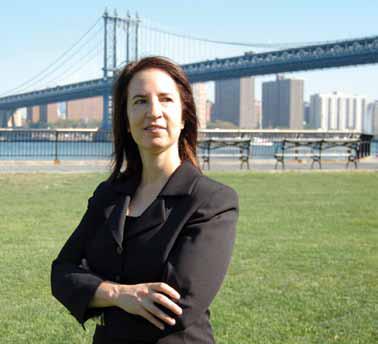by Amy Stone
Reworking “Rabbi”
Before the recession, five years of rabbinical school guaranteed a self-supporting vocation. Not anymore.
The man at the hub of rabbinic placement for Reform Judaism, Rabbi Lennard Thal, characterizes the current economic tough times for rabbis as the result of “the perfect storm.” First, congregations cut back on rabbinic staff when congregants lost jobs and were unable to pay dues. Second, senior rabbis looked at their shrunken pensions and decided not to retire. Third, a restructuring of the congregational organization, the Union for Reform Judaism, left experienced rabbis looking for jobs. And, finally, there were the usual numbers of new rabbinic graduates entering the market; when they were admitted five years earlier to fully enrolled classes of 35 or 40 students, no one at Reform Judaism’s seminary, Hebrew Union College-Jewish Institute of Religion, could have predicted today’s harsh economy. And while the number of Reform congregations in North America is growing — from approximately 850 to 910 over a decade — some temples are making do with fewer rabbis.
Of the 1,700 Reform rabbis in North America, 575 are women. Of Conservative Judaism’s 1,648 rabbis, 273 are women. The number of Conservative congregations is now down to 650 from a high of 800. In teasing out the hard-time trends for both of these branches of Judaism, we see that the numbers are small and the information anecdotal. But there’s the sense that women are disproportionally filling the lower ranks with jobs that may be cut.
A board member of the Women’s Rabbinic Network (WRN), the professional organization for more than 200 Reform women rabbis, emphasizes that Reform Judaism has yet to provide data comparing women and men rabbis. However, Rabbi Allison Bergman Vann says, anecdotal evidence indicates that women continue to make less money than men.
WRN Director Rabbi Jacqueline Ellenson says, “We know anecdotally that women patch together meaningful work — combining teaching in a Jewish middle school with working at a Jewish home for the aged. And a woman will say, ‘Don’t fire me. I’m willing to work fewer hours to remain on staff ’. Because of family responsibilities, women are often willing to trade on work to get flexibility.”
Conservative Judaism unflinchingly revealed these same trends in the 2004 study “Gender Variation in the Careers of Conservative Rabbis: A Survey of Rabbis Ordained Since 1985” (the year the first Conservative woman rabbi was ordained). The study, by Steven M. Cohen and Judith Schor, found that women rabbis are paid less, are less likely to be pulpit rabbis, that those who are pulpit rabbis tend to be in the smallest congregations, and that 36 percent of all women rabbis are working part time. A possible factor: hardly any men in this study reported hurtful remarks about their age or gender early in their pulpit work, but 27 percent of women reported negative comments about their age and 58 percent heard negative remarks about their being female. A stunning 56 percent of women in congregations and 54 percent of women in non-congregational work believe their gender hurt their careers.
While the 2004 study has yet to be updated, Rabbi Ellen S. Wolintz-Fields, chairperson of the Women’s Committee, of the Rabbinical Assembly, the organization of Conservatives rabbis, says, “Often the assistant rabbi is a woman, and many of those jobs seem to be the ones being cut.” Like her Reform counterparts, she says female rabbis are often in a weaker employment position because they choose to stitch together a number of part-time positions in lieu of full-time jobs, in order to accommodate raising children. Many of these part-time positions, however, “are no longer available, because institutions do not have the funds, and so they just cut programs, often run by my female colleagues working part time.” Lennard Thal also sees that female rabbis “more often than men [are] the second wage earner,” and hence are less able to relocate for job opportunities.
Compared with the much larger numbers of Reform and Conservative institutions, Reconstructionist Judaism’s women and men rabbis seem to be weathering the storm with far more equilibrium; they have a total of 308 rabbis, with women and men equal in numbers and salary. This could well be because the Reconstructionist Rabbinical College welcomed both women and men from its start in 1973, and because it did not emphasize pulpit positions. Of the dozen new Reconstructionist rabbis each year, roughly half go into congregational positions and the rest tend to work with Hillels, on campus, and in education.
It may take a perfect storm to shake up the dominant rabbinic establishments’ definition of rabbi. Defining success as something other than a pulpit job and making the alternatives financially viable would create a covenant worth honoring even in good times.
Labor Pains
The articles in this special section:
Union Made
by Sarah Blustain
Meet the woman who thinks there’s a better way to organize for the way we work today.
Age of Innocence
by Sarah Blustain
For older women suddenly out of work, retooling themselves for the New Economy and the Internet Age is a double challenge.
Reworking “Rabbi”
by Amy Stone
Before the recession, five years of rabbinical school guaranteed a self-supporting vocation. Not anymore.
 Please wait...
Please wait...